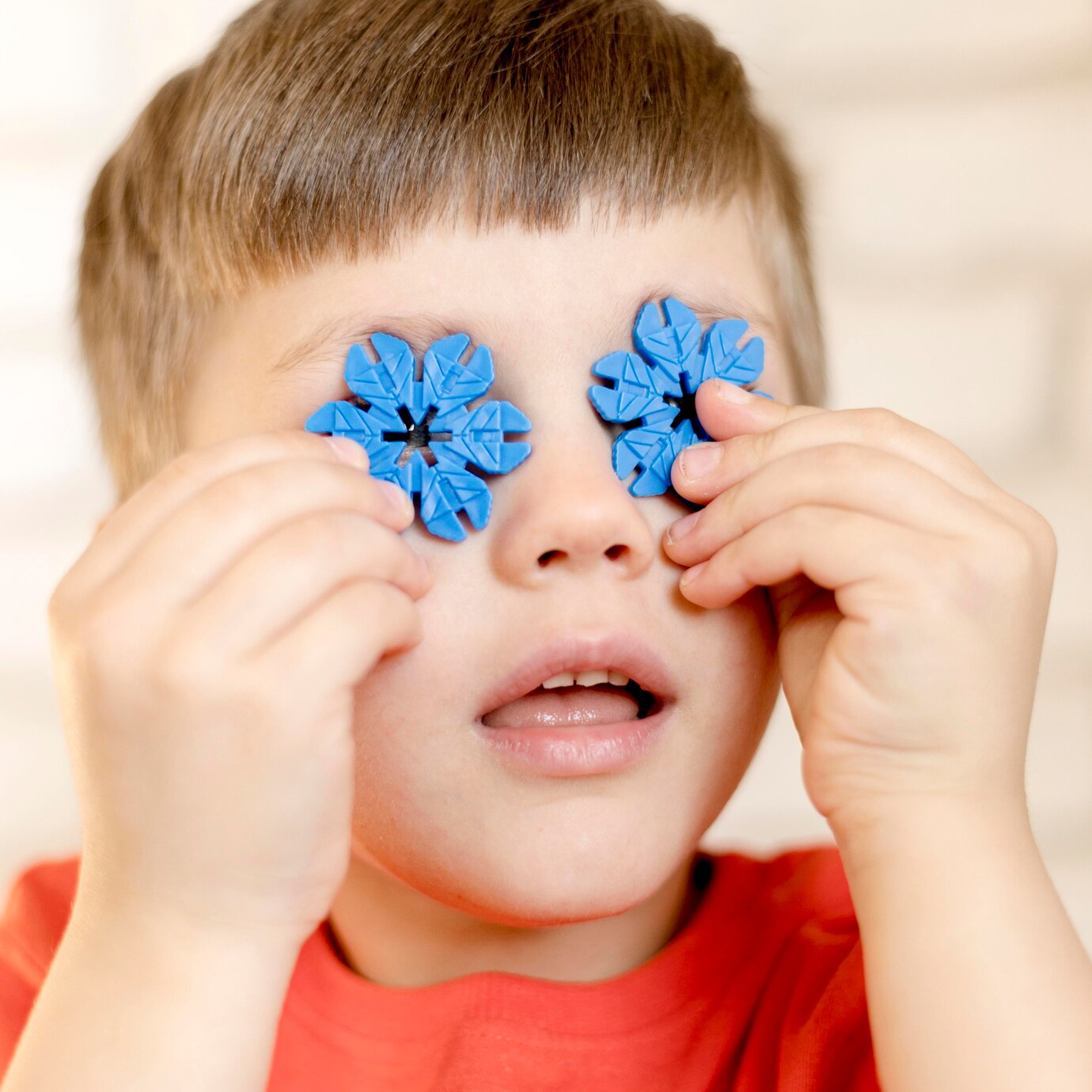
A developing vision
Custom optical solutions for children’s eyes health

Children's glasses
Children’s vision is constantly evolving. That’s why it’s essential to monitor it from the early years and intervene promptly with the right, personalized tools.
At ILOP optical centers, we care for children’s vision with expertise, attention, and dedicated technologies.
Caring for vision… from the very first years!
Vision is one of the most important senses for a child’s development, yet many visual problems can go unnoticed in early childhood. That’s why it’s essential to start eye check-ups early, even if no obvious signs are present.
First check-up: within the first year of life
The first eye exam should be done by 12 months of age, especially if there is a family history of visual issues (myopia, strabismus, amblyopia, etc.). At this stage, any developmental visual problems can be identified early.
Preschool age check-ups (3–5 years)
Between ages 3 and 5, it’s possible to detect vision defects such as hyperopia, myopia, astigmatism, or amblyopia (“lazy eye”), even if the child does not complain. Early correction is crucial for healthy development and success.
School age: clear vision for effective learning
During primary school, vision plays a central role in learning—reading, writing, attention, and posture all depend on good eyesight. Annual eye exams are recommended, even if no symptoms appear.
Check-up
When to start vision screenings for children?
Vision monitoring
Why are vision screenings important?
- Prevention: Many issues, if detected early, can be resolved without lasting consequences.
- Targeted correction: Corrective lenses, if needed, can support and accompany visual development.
- Neurological development: Good vision also aids motor and cognitive growth.
- Academic success: Seeing well means better participation, learning, and growing with greater confidence.
Here for families
At ILOP Optical Centers, we support families and children through a journey of care, listening, and tailored solutions. We stand alongside every parent to identify the most suitable vision correction, taking into account the child’s age, daily habits, school and sports activities, and, of course, their specific visual needs.
The pediatric eye exam is a crucial moment for prevention, but also an opportunity to explore the various available options: glasses, pediatric contact lenses, prisms, visual aids, and vision therapy programs.


Tailored to their eyes
Some of the most common conditions we treat thanks to our specialists include:
- Childhood myopia (including progressive)
- Astigmatism and hyperopia
- Strabismus and eye deviations
- Amblyopia (lazy eye)
- Visual difficulties with reading or writing
- Inefficient binocular vision
- Oculomotor disorders (impaired eye movement)
- Special visual needs for sports or digital device use
- Correction with prisms and visuo-postural rehabilitation
Thanks to our experience, we understand how important it is to build a trusting relationship with young patients, creating a calm and positive environment to encourage natural cooperation during exams and check-ups.
Early intervention is essential.
Amblyopia is a condition where one eye, although structurally healthy, does not develop normal vision. It typically appears in the early years of life and is often associated with refractive errors or strabismus.
Treatment includes:
- Full optical correction with glasses
- Vision therapies such as patching the dominant eye or orthoptic exercises
- Regular monitoring by an ophthalmologist
Early diagnosis and proper management can lead to full vision recovery. For this reason, we recommend eye exams as early as ages 3 to 4.
Monitoring eyesight
Amblyopia (lazy eye)
Monitoring eyesight
Prism lenses
A visual aid for eye alignment issues
Some children may experience difficulties coordinating vision between their two eyes. Prism lenses, incorporated into glasses, help correct minor strabismus or misalignments, improving visual comfort and reducing eye strain.
When are they recommended?
- In cases of latent strabismus (heterophoria)
- For symptoms such as double vision, headaches, or difficulty reading
- Upon the recommendation of an ophthalmologist or orthoptist
- Prism lenses don’t just change vision—they can significantly improve a child’s well-being in everyday life and at school.
Prism lenses don’t just change vision—they can significantly improve a child’s well-being in everyday life and at school.
Comfort, safety, and child-friendly design
Children’s glasses are not simply smaller versions of adult frames. They require durable materials, flexible frames, ergonomic design, and lenses tailored for developing eyes.
At ILOP optical centers, we select lightweight, colorful, and shatterproof pediatric frames that ensure:
- Proper visual alignment
- Maximum comfort even during extended wear
- Safety during movement and play
- Attractive aesthetics to encourage acceptance

The program
Our team supports families and children in choosing the most suitable solution based on age, daily activities, and visual needs.
✔ Comprehensive ophthalmologic, optometric, and orthoptic evaluation
✔ Guidance on the use and care of glasses, with active involvement of parents
✔ Regular check-ups and follow-ups to monitor adaptation, eye health, and correction effectiveness

Focus: myopia correction in children
Safe and tailored solutions for the little ones
From our Magazine
An in-depth look: Myopia in children – how to take the best care of it.
The ILOP experts, for the whole family
Contact us!
Book a consultation with our professionals.
We will work together to find the safest and most comfortable solution for your child’s visual needs.








